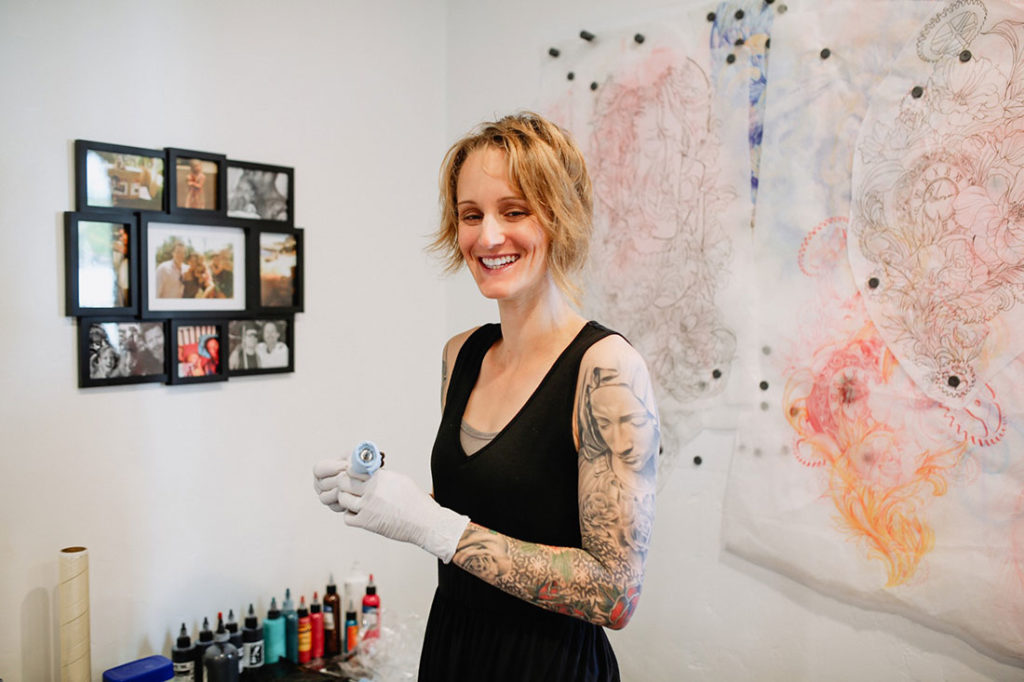What is your brand story? And how can you make your particular brand stand out among the rest?
Always remember that your brand encompasses all the things someone feels when they think of you. A car manufacturer’s brand might include feelings of safety and luxury. But it also involves the company’s history and approach to environmental concerns. Brands are as complex as the companies they represent. Storytelling offers the best vehicle to simplify those brands and connect with your audience at an emotional, memorable level. That’s because you are more than a product. You’re a unique company with a story that is authentic to both yourself and others.
With that in mind, let’s look at seven ways to make your brand’s story really pop.
Research your own company: what are people saying?
Start by researching your own company. Remember, your brand isn’t what you think you provide. It’s what others think you provide.
Ask customers how they use your product. Find out what they like about it and make a list of recurring words or phrases. Pay attention to the stories they tell. Often, the small things that make your product unique have surprising—even life-changing—benefits for others. See which of these work well into the story you want to tell. You can research your company online too. Brand listening tools such as Sprout Social or Meltwater help you monitor online mentions. Listen again for the keywords, phrases, and stories you can incorporate into your own brand story.
Tell your brand story simply, personally, and authentically.
People trust brands they empathize with. The brands they admire for their spunk and stamina. The story of your company doesn’t need to be complicated. Did your grandparents start the business 60 years ago? And do you maintain that level of quality to this day? Are you an immigrant or first-generation college graduate who now runs their own business?
Personal, authentic elements such as these create empathy and work well in telling your brand story. And they’re simple. Items such as these can be conveyed authentically in one or two sentences or in 10 seconds of airtime.
Focus on a problem your brand uniquely solves.
Every good story has conflict and resolution. For a product, that means your customer has a problem. Your offering resolves it. But to make your story really pop, you want to resolve a problem uniquely. And although direct comparisons with your competition should be avoided, you do know the grievances people have in a particular industry.
As an example, consider timeliness. Nearly everyone has a grievance regarding a home improvement contractor going over time and over budget. A regional walk-in shower installer addresses this fact in their brand story. In every brand-storytelling medium, they make clear that they provide one-day installation and never charge for overtime. This approach resolves the client’s concerns of being cheated. And it also works into the company’s overall brand image of competence and neighborliness.
Cater to your customer’s interest while remaining authentic.
Know your audience, and narrow the focus of your brand story accordingly. For instance, I worked with a nonprofit that advocated for increased Social Security benefits. We publicized retirement planning blogs as part of our brand story of caring for seniors. But research found that over 90% of our audience had already retired. This data did not change our brand story. But it did it focus.
That sort of adjustment in your brand story helps it to resonate with your audience. The balance you need to keep is in remaining authentic while doing so. Don’t pander by trying to adopt the interests or language of your audience beyond your personal knowledge and experience. No one likes feeling pandered to.
Make use of brand storytelling and even tools in social media.
A brand story should be personal and authentic. WIth social media tools, the opportunity presents itself literally 24 hours a day. Make use of brand storytelling tools in social media. The Stories feature on Facebook or Instagram can help. Likewise, the Events and Posts features in Google My Business offer the opportunity to showcase the story behind your event in ways a flyer never could. Each of these tools and many more help you to truly humanize the story of your company.
Tell a “day in the life of…” yourself or an employee through images.If you are a graphic designer, consider featuring your work in seven stages from concept to completion. This approach can work for nearly any industry to help your brand stand out.
Engage your brand advocates.
Ultimately, your brand isn’t what you think of your company. It’s how others think and feel. Digital media provides the opportunity to engage the brand advocates already telling your story. Engagement shows that you appreciate them. And therefore, that you appreciate all of your clients.
Suppose a customer publicly posts, “I loved my time at Janice’s Spa!” Here is a golden opportunity to politely follow up.
“Thank you so much, Sara!” you might reply. Followed by, “What did you enjoy most?” Most of the time, the advocate will be all too happy to say specifically what they like. “Great treatment in a relaxing setting!” They will likely even point out a particularly helpful employee. You’ve turned someone from a positive but vague advocate into a person actively telling the story of your brand.
Remain consistent.
When you pull all of these elements together, you have quite a unique brand story to tell. You have the company background, your personal background, and how you use that experience to uniquely resolve a potential client’s “conflict.” You even have advocates you can learn from telling your story for you.
The seventh piece is for you to remain as consistent as possible moving forward. People are busy. People are scrolling fast through their media. They often need to hear the same message several times before they remember it. Although you might make small adjustments in your brand story over time, any major change will confuse people. Worse, your inconsistency may come across as disingenuous and drive people away. Do you trust someone whose story always seems to change? Remain consistent across all media. Only then will your brand story truly pop.
Photo by @5byseven/Twenty20











